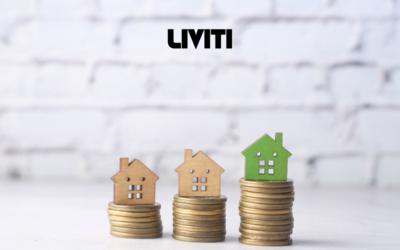Affordable housing remains a growing concern as the Australian property market faces mounting pressure, with prices rebounding from a brief dip and vacancy rates hitting record lows – fueling a surge in rents. As the federal election is getting closer, the political parties have presented their housing policies to solve the on-going housing crisis in Australia, but are these policies enough or will they even help the market fundamentals? In this article, we examine the election housing policies of Labor, the Coalition, and the Greens and evaluate their effectiveness against underlying supply and affordability challenges.
Housing Market Snapshot: The 2025 Context
- Median Dwelling Price (National): $815,912 (Corelogic Monthly Housing Chart Pack April 2025)
- Annual Home Price Growth: +3.8% YoY (Corelogic Monthly Housing Chart Pack April 2025)
- Rental Vacancy Rate: 1.1% (SQM Research, Mar 2025)

Australian housing market is characterized by:
- Chronic undersupply of dwellings, lack of affordable housing.
- Population growth through net overseas migration (446,000 annually).
- Record-low rental vacancy rates.
Labor’s Policy: Supply-Side Incentives for First Home Buyers
Key Proposal:
- $10 billion to construct 100,000 discounted homes over 8 years (Australian Brodcasting Corporation).
- Reserved for first-home buyers, with prices up to 25% below market.
- Buyers eligible for 5% deposit and exemption from LMI.
Strengths:
- Targets housing supply directly.
- Encourages homeownership without inflating investor activity.
- Supports equity for younger buyers locked out of the market.
Weaknesses:
- Delivers only approaximately 12,500 homes annually, far below national need.
- Does not address zoning, infrastructure funding, or planning delays.
- No direct intervention in the rental market.
While the Labor proposal offers moderate supply support, it lacks a systemic solution to land release and urban densification-two critical levers for medium- and long-term affordability. Without state-level cooperation, the build pace is unlikely to influence price elasticity in urban areas.

Coalition’s Policy: Demand-Side Tax Incentives and Migration Cuts
Key Proposals:
- Allow mortgage interest deductibility (up to $650,000) for new homes for first-home buyers—potentially saving $12,000 p.a.
- Impose a temporary ban on foreign buyers
- Cut immigration by 30,000 international students i.e. migrants annually
Strengths:
- Targets housing demand moderation
- Incentivizes new home construction through selective tax breaks
- Appeals to middle-income households
Weaknesses:
- Demand reduction via migration limits may harm labor force growth and rental demand mismatches
- Mortgage tax deduction likely to push up prices without boosting supply
- No intervention in rental affordability or public housing
Historically, tax concessions (e.g., First Home Buyer Grants) have increased purchasing power without proportionate supply increases, leading to price inflation. This policy is vulnerable to similar distortions unless supported by immediate supply injections.

Greens’ Policy: Structural Reform and Decommodification
Key Proposals:
- Build 1 million new public and affordable homes over 20 years
- Implement rent caps tied to CPI growth
- Eliminate negative gearing and CGT discounts for multi-property investors
Strengths:
- Long-term supply pipeline via public housing
- Immediate cost-of-living relief for renters
- Reduces speculative investor activity
Weaknesses:
- Implementation depends on federal-state coordination and funding capacity
- Rent controls may reduce investor appetite, affecting rental stock growth
- Requires sustained political will across multiple electoral cycles
The Greens’ approach aims to shift housing from an investment asset to essential infrastructure. However, historical data shows rent controls can suppress supply in tight markets unless offset by large-scale public development—requiring significant fiscal investment and land procurement planning.

Why None of These Policies Are Sufficient Long-Term Solutions
Despite differing ideological foundations, all major parties fall short of solving Australia’s housing crisis systemically. Here’s why:
1. Insufficient Dwelling Supply
CoreLogic shows that Australia needs 240,000 new dwellings annually to keep pace with population growth. Current policy proposals from Labor (12,500/year) and the Greens (50,000/year) fall short, while the Coalition’s plan lacks a supply-side component entirely.
2. Planning Bottlenecks and Infrastructure Lag
None of the parties meaningfully address:
- Council-level zoning restrictions
- Developer approval timelines
- Infrastructure servicing delays (sewerage, public transport, roads)
These factors contribute directly to high land prices and delays in dwelling completions.
3. Rental Market Crisis Ignored
With rental vacancies at historic lows, neither Labor nor the Coalition has proposed immediate rental support measures. Proptrack forecasts show national rents may rise another 10% by mid-2025, propelling the supply cirisis even more.
4. Fiscal Sustainability and Incentive Misalignment
- Coalition’s tax deductions risk favoring higher-income earners
- Greens’ structural reforms may require politically challenging tax policy shifts
- Labor’s homeownership focus does not adequately support renters or regional markets
Read More: The Significant Impact of Consumer Price Index Changes on Property Investment in Australia for 2025
Macroeconomic Tailwinds Point to Further Property Price Growth
Despite the political rhetoric around affordability, several macroeconomic trends in 2025 suggest that Australian property prices may continue to climb—regardless of which party wins the election.
1. Trade Tensions and the AUD Devaluation
The recent trade attacks between the U.S and China with the new tariff regime initiated by President Donald Trump has affected global markets. Australia, being highly integrated with both economies, has experienced collateral impacts, particularly through the currency channel.
- The Australian Dollar (AUD) has devalued by nearly 12% YTD, making Australian assets—including real estate—more attractive to foreign buyers and institutional investors seeking currency hedges.
- A weaker AUD raises construction input costs (steel, timber, fuel), further tightening housing supply by pressuring developers’ margins.
2. Stock Market Decline Shifting Capital to Property
In April 2025, the ASX200 shed over 25% of its value due to rising global uncertainty and declining tech and mining valuations. This has triggered capital flight from equities into defensive asset classes.
- Residential real estate, especially in Sydney and Melbourne, is historically seen as a safe-haven asset during market volatility.
- CoreLogic has already reported a 0.9% increase in capital city dwelling values in March alone, marking the third consecutive monthly gain.
3. Prospect of Further RBA Interest Rate Cuts
Amidst falling equity prices and subdued GDP growth (1.4% annualized), the Reserve Bank of Australia (RBA) is signaling a potential rate cut to stimulate investment and consumer spending.
- Even a modest 25 basis point cut could significantly improve borrowing capacity, especially under the current DTI (debt-to-income) assessment buffers.
- Lower mortgage rates would reduce monthly repayments, likely stimulating further demand across both owner-occupier and investor segments.
4. Amplification from New Housing Policies
When layered atop expansionary housing policies—such as Labor’s discounted homes, the Coalition’s mortgage tax breaks, and the Greens’ planned public housing investment—the net effect may be increased transactional activity and price competition, especially in metropolitan growth corridors.
Market Outlook
According to recent Proptrack forecasts, national dwelling prices are projected to rise by upto 4% over the next 12 months, with higher growth expected in inner-city areas and low-supply regional markets. The combination of:
- Easy monetary policy,
- Fiscal stimulus through housing,
- Supply-side delays, and
- Ongoing demographic demand (migration and urbanization)
Conclusion
Australia’s 2025 election housing policies vary in style and scope, from Labor’s incremental supply additions to the Coalition’s demand-side tax incentives and the Greens’ transformative public housing vision. However, without cross-party commitment to structural reform, infrastructure alignment, and sustainable supply growth, the country will remain trapped in a cyclical housing affordability crisis.
Unsure about what you should do ? Schedule a call with our property experts at Liviti and let’s figure out what’s the right step for you.




